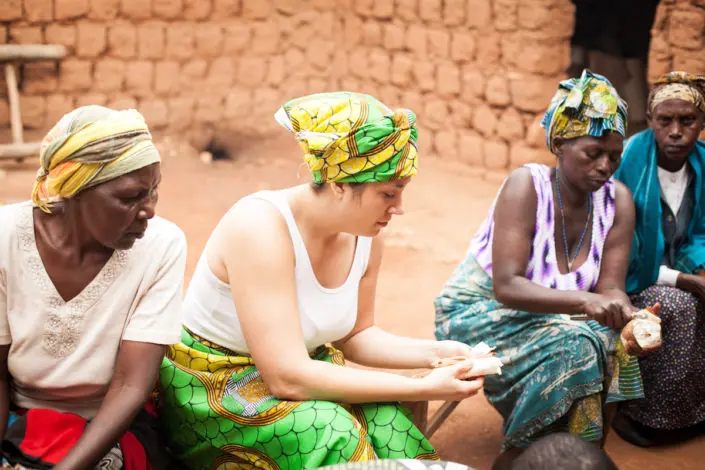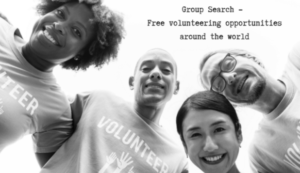Cooking side by side with local women in Fort Portal, a volunteer learns traditional recipes during a community visit with PLANE Uganda. This NGO invites volunteers to support health outreach, SRHR education, GBV awareness, tree planting, youth mentorship, and school support. Placements run year-round, all ages welcome. Expect 4–5 hours per day, four days per week. Accommodation and meals are included. There are no program fees; optional donations help projects. Visa invitation letters are available. Wi-Fi, orientation, and cultural exchange are provided, plus a completion certificate. Make a positive impact while sharing skills and learning from Uganda’s warm community together.
Read the complete article 👇🏾
In this PLANE NGO photo from Fort Portal, a volunteer joins women who are wrapping bright cotton cloth around their waists and tying matching headscarves.
Across central Uganda, many women wear the gomesi, also called the busuuti. It is a floor length dress with a wide square neckline, pointed or puffed sleeves, and a long sash that is tied tightly around the waist to shape the silhouette. The gomesi became a court dress in the Buganda Kingdom in the early 20th century and today appears at weddings, church services, and royal celebrations. Fabrics range from cotton to satin and silk, and patterns often signal personal taste or family preference more than strict rules.
In the west and southwest, especially among Banyankore and Bakiga communities, women may wear the mushanana, a graceful two-piece ensemble made of a wrapped skirt and an over-the-shoulder drape. In everyday life across the country, many women use kitenge or lesu wrappers with fitted tops, as in the image. Headwraps are common both for style and practicality, and are often tied to match the skirt or dress.
Men traditionally wear the kanzu, a long cream or white tunic that reaches the ankles. Fine embroidery at the collar and chest adds detail, and for formal occasions the kanzu is paired with a dark jacket and sometimes a kofia cap. The kanzu is standard attire at introductions, weddings, Eid celebrations, and other important gatherings, where it signals respect for the hosts and the occasion.
Before cotton became widespread, Ugandans made and wore barkcloth, called lubugo in Luganda. Crafted from the inner bark of the mutuba tree and softened by hours of rhythmic beating, barkcloth is still produced today for ritual, artistic, and occasional ceremonial use. The craft is recognized by UNESCO as an element of Intangible Cultural Heritage, and its earthy copper browns remain a visual symbol of continuity.
Dress in Uganda is deeply social.
Styles mark life stages and rites, but they also adapt, blending older forms with modern taste. A sash tied just so, a boldly patterned headwrap, or the sheen of a satin gomesi can all say welcome, congratulations, or I honor this moment.
The result is a living wardrobe where tradition is not a costume but part of everyday belonging.








